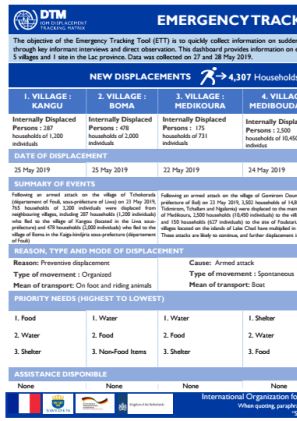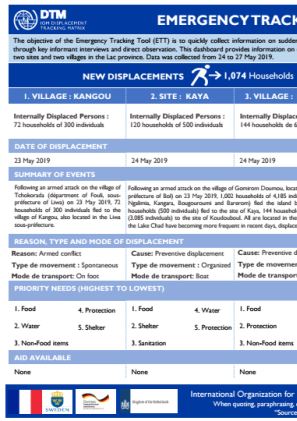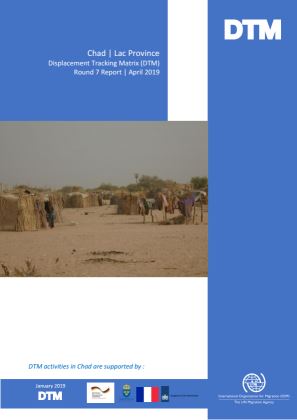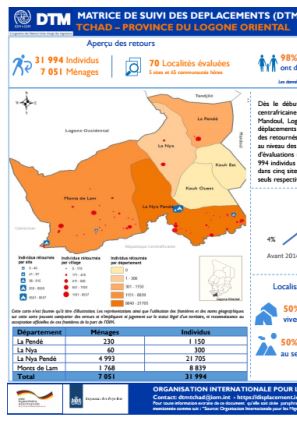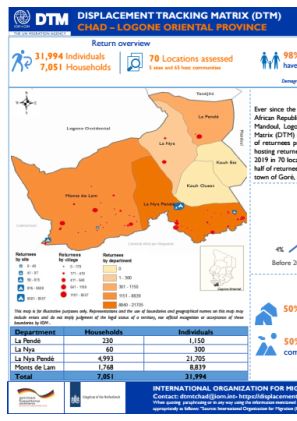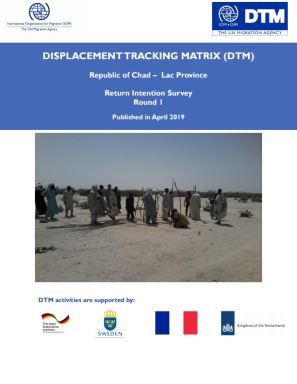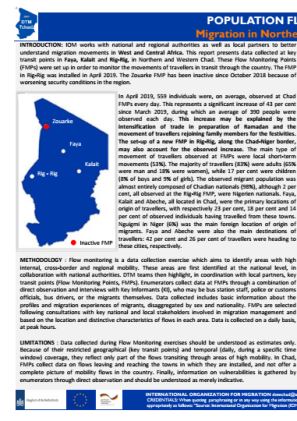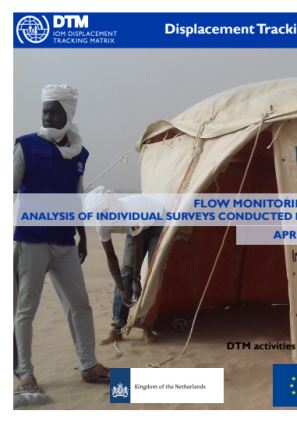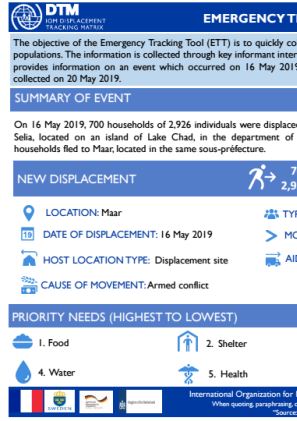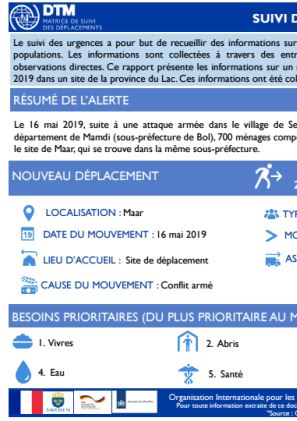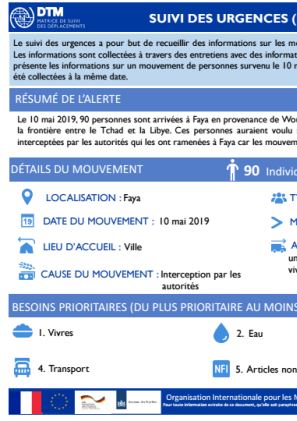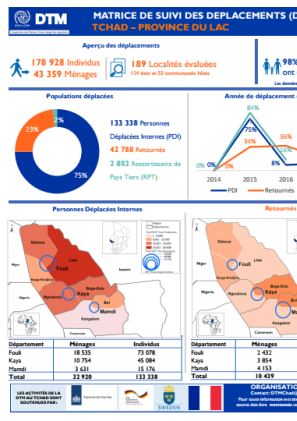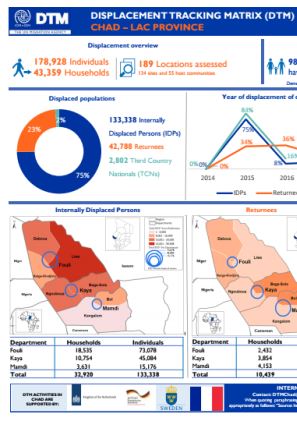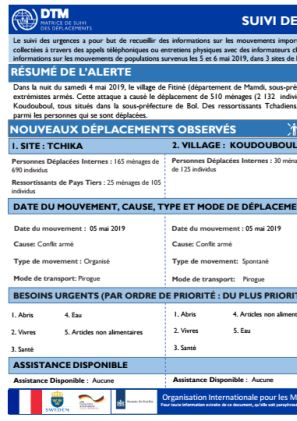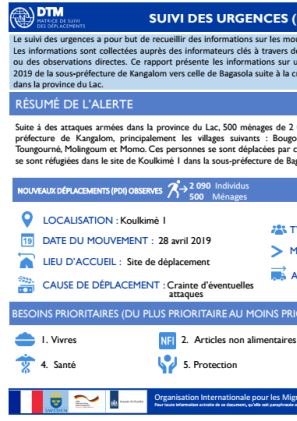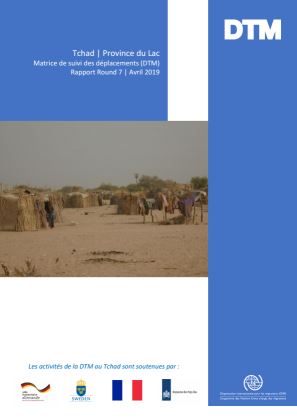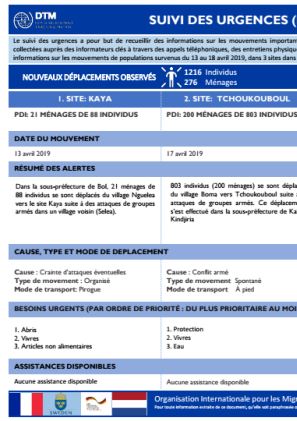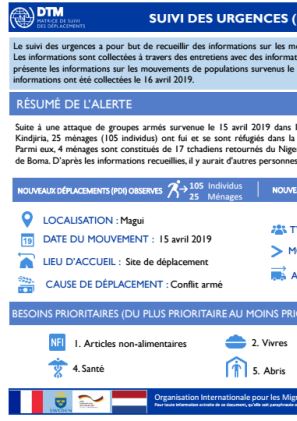-
Countries
-
Data and Analysis
-
Special Focus
-
Crisis Responses
Chad
IDPs tracked
Displacement Movements
452,000
IDMC 2023
Data collection round
About Chad
Since 2014, the International Organization for Migration (IOM) has been working with the Government of Chad and other relevant partners to conduct displacement and flow monitoring across multiple provinces of Chad: Lac, Moyen-Chari, Logone Oriental, Borkou, Tibesti, Borkou and Ennedi Ouest.
The displacement dynamic analysis is rooted in the experiences of the 2011 response to the Libya crisis during which IOM supported more than 150,000 people arriving in northern Chad. Since then, numerous crises, including the Lake Chad Bassin crisis, the crisis in the Central African Republic and recurring displacement dynamics in Libya and Sudan have necessitated the development of a coherent approach to monitoring of migration flows to Chad. Most recently, the renewed interest in Chad as a transit and departure country for migrant flows towards Libya and potentially onwards to Europe, have inspired a new quality and coherence in IOM’s migration data management approach in Chad.
The Displacement Tracking Matrix (DTM) is an information management system that tracks and monitors the displacement and population mobility. It is designed to regularly capture, process, and disseminate various layers of information to provide a better understanding of the evolving needs of mobile populations, on site or en route both of forced displacement and other migration flows. Adapted from the global methodology, relevant DTM components are being carried out in targeted locations to facilitate displacement management, the delivery of immediate humanitarian services and emergency response, informing transition and durable solutions and development-centred policy.
Since its launch, DTM has grown to a fully integrated component of the national and sub-national humanitarian information management architecture, informing the Government of Chad and international response both humanitarian and developmental across the majority of sectors/clusters and as part of the commitment of the international community and the Government of Chad to the New Way of Working (NWOW) as part of the humanitarian-development nexus.
Contact
DTM Chad
DTMChadCoordinationTeam@iom.int
Current Donors
- USAID
- Netherlands
- CERF
- Peace Building Fund
- Spain
Chad — Emergency Tracking Tool Report 12 (22—26 May 2019)
The objective of the Emergency Tracking Tool (ETT) is to quickly collect information on sudden displacements of populations. Information is collected through key informant interviews and direct observation.
Tchad — Suivi des Urgences 11 (24—25 Mai 2019)
Le suivi des urgences a pour but de recueillir des informations sur les mouvements importants et soudains de populations. Les informations sont collectées auprès d’informateurs clés à travers des appels téléphoniques, des entretiens physiques ou des observations directes.
May 27 2019
Tchad — Suivi des Urgences 11 (24—25 Mai 2019)
Chad — Emergency Tracking Tool Report 11 (24—25 May 2019)
The objective of the Emergency Tracking Tool (ETT) is to quickly collect information on sudden displacements of populations. Information is collected through key informant interviews and direct observation.
Chad — Lac — Displacement Report 7 (8 January — 28 February 2019)
This seventh report of the Displacement Tracking Matrix (DTM) assessment provides an overview of the situation in Chad’s Lac Province, where displacements are due to insecurity linked to violence by extremist armed groups.
Tchad — Logone Oriental — Dashboard des Déplacements 1 (Mars — Avril 2019)
Dès le début de la crise centrafricaine, des ressortissants Tchadiens ont quitté la République centrafricaine pour retourner au Tchad, notamment dans les provinces du Sud (Moyen-Chari, Mandoul, Logone oriental et Logone occidental).
Chad — Logone Oriental — Displacement Dashboard 1 (March — April 2019)
Ever since the beginning of the Central African crisis, Chadian nationals have been fleeing the Central African Republic to return to Chad, and in particular to the country's southern provinces (Moyen-Chari, Mandoul, Logone oriental and Logone occidental).
Chad — Return Intention Survey Report 1 (27 February — 18 March 2019)
The International Organization for Migration (IOM) has been implementing the Displacement Tracking Matrix (DTM) in Chad since May 2015 to collect information about displacement caused by the conflict currently affecting the Lac Province.
Chad — Flow Monitoring Report 25 (April 2019)
This report presents data collected at key transit points in Faya, Kalait and Rig-Rig, in Northern and Western Chad. These Flow Monitoring Points (FMPs) were set up in order to monitor the movements of travellers in transit through the country. The FMP in Rig-Rig was installed in April 2019.
May 26 2019
Chad — Flow Monitoring Report 25 (April 2019)
Chad — Flow Monitoring Survey Report (January — March 2019)
This document offers an analysis of 731 individual surveys carried out between January and March 2019 with travellers crossing the two Flow Monitoring Points (FMPs), Faya and Kalait, set up in Northern Chad.
Chad — Emergency Tracking Tool Report (16 May 2019)
The objective of the Emergency Tracking Tool (ETT) is to quickly collect information on sudden displacements of populations. The information is collected through key informant interviews and direct observation.
Tchad — Suivi des Urgences 10 (16 mai 2019)
Le suivi des urgences a pour but de recueillir des informations sur les mouvements importants et soudains de populations. Les informations sont collectées à travers des entretiens avec des informateurs clés ou des observations directes.
May 23 2019
Tchad — Suivi des Urgences 10 (16 mai 2019)
Tchad — Suivi des Urgences 9 (13 mai 2019)
Le suivi des urgences a pour but de recueillir des informations sur les mouvements importants et soudains de populations. Les informations sont collectées à travers des entretiens avec des informateurs clés ou des observations directes.
May 16 2019
Tchad — Suivi des Urgences 9 (13 mai 2019)
Tchad — Rapport sur le suivi des flux de populations 25 (Avril 2019)
Ce rapport présente les données collectées pendant le mois d'avril 2019 aux points de passage Faya, Kalait, dans le nord du Tchad, et Rig-Rig à l'ouest du pays, qui ont été installés afin d’observer les mouvements des voyageurs en transit.
Tchad — Suivi des Urgences 8 (10 mai 2019)
Le suivi des urgences a pour but de recueillir des informations sur les mouvements importants et soudains de populations. Les informations sont collectées à travers des entretiens avec des informateurs clés ou des observations directes.
May 13 2019
Tchad — Suivi des Urgences 8 (10 mai 2019)
Tchad — Dashboard de Déplacement 8 (Mars — Avril 2019)
A la date d'avril 2019, 178 928 personnes déplacées au sein de 43 359 ménages ont été identifiés, y compris 133 338 PDI, 42 788 retournés, et 2 802 Ressortissants de Pays Tiers (RPT), dans 189 localités (134 sites de déplacement et 55 communautés hôtes).
Chad — Displacement Dashboard 8 (March — April 2019)
As of April 2019, 178,928 displaced individuals (43,359 Households), including 133,338 IDPs, 42,788 Returnees and 2,802 Third Country Nationals (TCNs) were identified in 189 locations (134 sites and 55 host communities).
Tchad — Suivi des Urgences 7 (5—6 mai 2019)
Le suivi des urgences a pour but de recueillir des informations sur les mouvements importants et soudains de populations. Les informations sont collectées à travers des appels téléphoniques ou entretiens physiques avec des informateurs clés ou des observations directes.
May 10 2019
Tchad — Suivi des Urgences 7 (5—6 mai 2019)
Tchad — Suivi des Urgences 6 (28 Avril 2019)
Le suivi des urgences a pour but de recueillir des informations sur les mouvements importants et soudains des populations. Les informations sont collectées auprès des informateurs clés à travers des appels téléphoniques, des entretiens physiques ou des observations directes.
May 06 2019
Tchad — Suivi des Urgences 6 (28 Avril 2019)
Tchad — Rapport de Déplacement 7 (8 Janvier — 28 Février 2019)
Ce septième rapport de la DTM donne un aperçu de la situation dans la Région du Lac au Tchad où les déplacements de population sont dus à l’insécurité liée aux violences des groupes extrémistes armés.
Tchad — Enquête sur les intentions de retour 1 (27 Février — 18 Mars 2019)
L’Organisation internationale pour les migrations (OIM) a mis en place la Matrice de suivi des déplacements (Displacement Tracking Matrix) au Tchad en mai 2015 pour obtenir des informations sur les déplacements engendrés par la crise.
Tchad — Suivi des flux de populations — Analyse d'enquêtes individuelles (Janvier — Mars 2019)
Ce document présente une analyse de 731 enquêtes individuelles effectuées entre janvier et mars 2019 auprès des populations en mouvement passées par deux points de passage (Faya et Kalait) installés dans le nord du Tchad.
Apr 24 2019
Tchad — Suivi des Urgences 5 (21 Avril 2019)
Tchad — Suivi des Urgences (16 Avril 2019)
Le suivi des urgences a pour but de recueillir des informations sur les mouvements importants et soudains de populations. Les informations sont auprès des informateurs clés à travers des appels téléphoniques, des entretiens physiques ou des observations directes.
Apr 18 2019
Tchad — Suivi des Urgences (16 Avril 2019)
Tchad — Rapport sur le suivi des flux de populations 24 (Mars 2019)
Ce rapport présente les données collectées pendant le mois de mars 2019 aux points de passage Faya et Kalait, dans le nord du Tchad, qui ont été installés afin d’observer les mouvements des voyageurs en transit.


